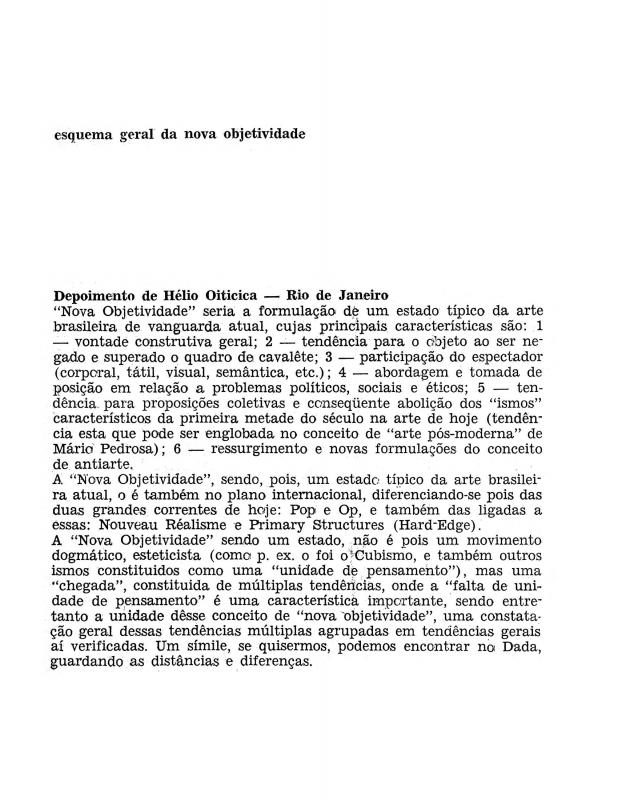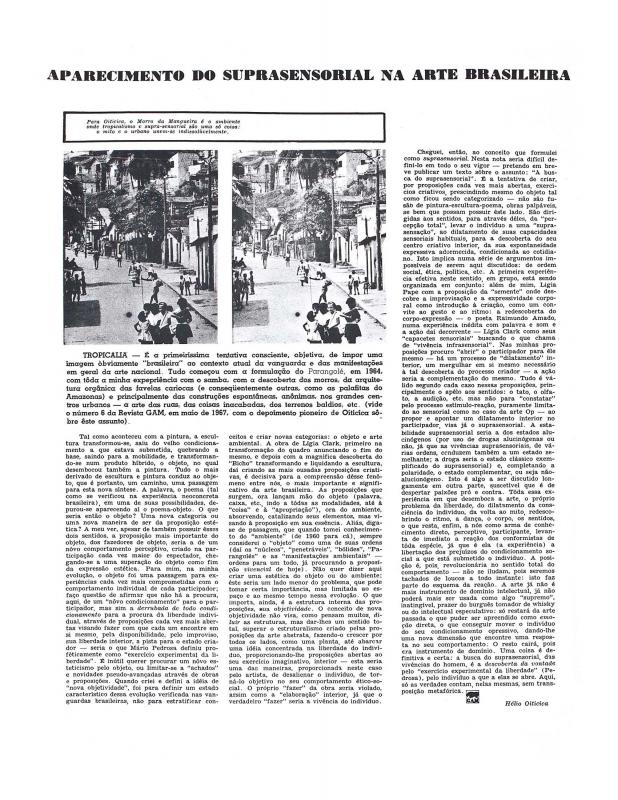Hélio Oiticica appeared in the mid-1950s art milieu in Rio de Janeiro, where he was a member of the Grupo Frente, a fraternity of artists, led by the painter Ivan Serpa, who were exploring geometric abstraction. Though he did not sign the Manifesto neoconcreto of 1959, Oiticica was an active member of the group whose lead theorist was Ferreira Gullar. During the following decade Oiticica was involved in various different kinds of Brazilian experimental art that all came together in 1967 for the group exhibition Nova Objetividade Brasileira. Following several exhibitions overseas—most notably at the Whitechapel Gallery in London, under the directorship of Guy Brett—Oiticica’s contributions to (non-conventional) critical thought were received with great interest in Brazilian art circles, due to both the theoretical content of his essays and the style in which they were written. In the 1970s he settled in New York, where he took part in the landmark exhibition Information. He returned to Brazil in the late 1970s, where he passed away shortly thereafter.
His legacy lives on in radical readings (like those in this essay)—in which the interdisciplinary nature of his approach is undoubtedly a major contribution—most of which, however, he did not write. In this particular case there was a previous instance, Opera Aperta (1962), written by Umberto Eco and available to an international audience, in which the Italian semiologist addressed the matter in literary terms. Perhaps as a result of the isolation experienced by Brazilian culture, the Concrete poet Haroldo de Campos hinted at the same idea (that Oiticica described) in “A Obra de Arte Aberta”. He refers to examples in works such as Un coup de dés by Mallarmé, Finnegans Wake by Joyce, and e .e. cummings’ poem Grasshopper, and associates them with the music of Pierre Boulez, as in his Hommage à Anton Webern. Seven years before Eco, Haroldo published his essay in the Diário de São Paulo (July 3, 1955); he then republished it in the first edition (1961) of Teoria da Poesia Concreta (Textos críticos e manifestos 1950-1960) (São Paulo: Livraria Duas Cidades, 1975), pp. 30-33.
Oiticica’s constant drive to raise awareness about Brazilian art in the 1960s and 1970s is clearly visible in essays such as his theoretical text about the 1967 exhibition “Esquema geral da nova objetividade” [doc. no. 1110372], and his innovative article on the “Aparecimento do suprasensorial na arte brasileira” [doc. no. 1110620].


